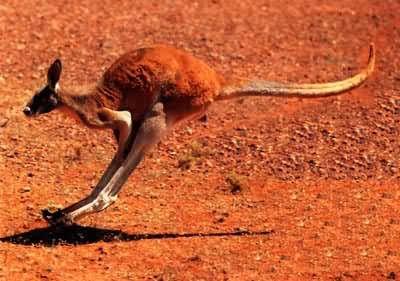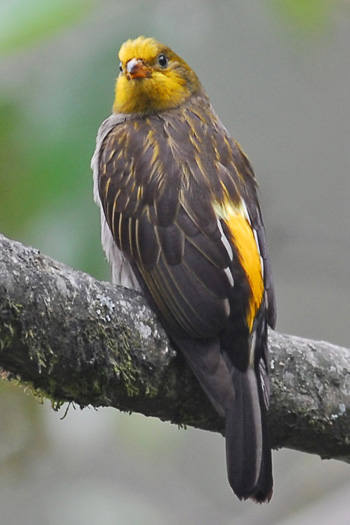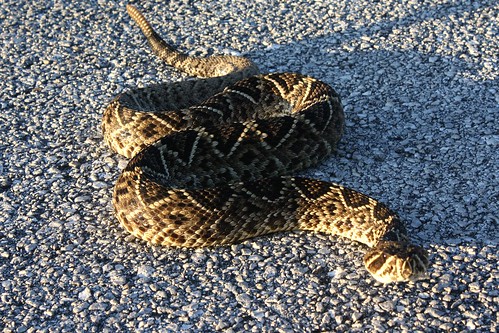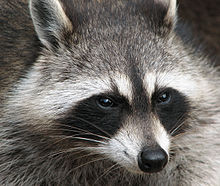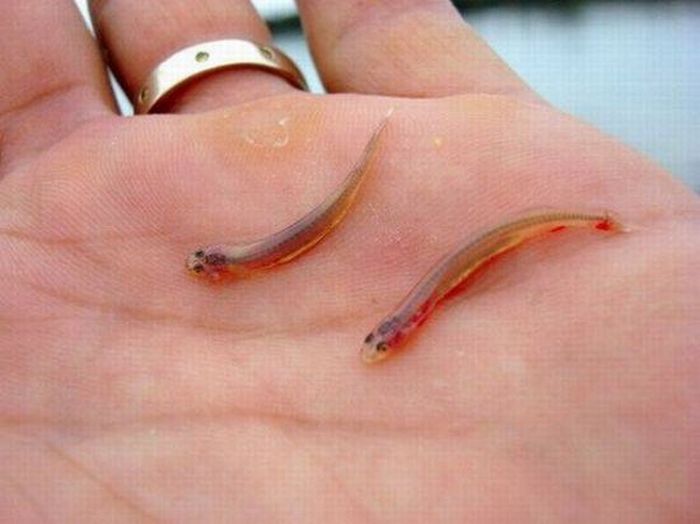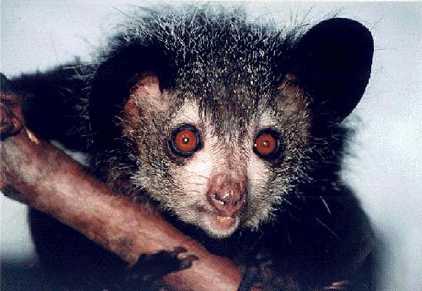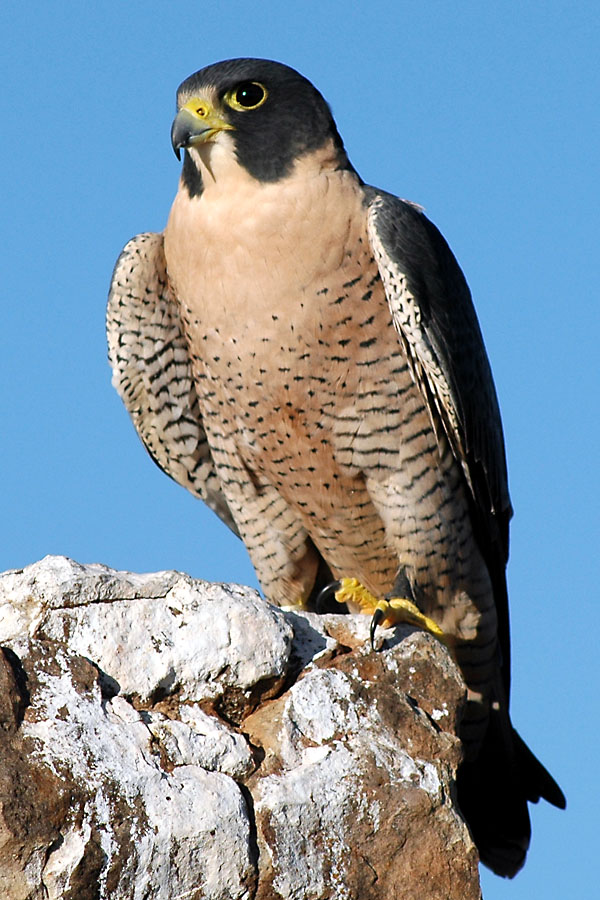(photo from polarfield.com)
Kal is 8 and loves to learn & share facts about animals. He dictates his posts for his mom & dad so that it's all written in his own voice. Mom & Dad do not do any fact-checking, but Kal seems to have an uncanny memory for all things animal-related. He hopes that one day his blog will be as famous as National Geographic.
Saturday, December 31, 2011
Polar bear
The polar bear is an amazing animal. It has 2 layers of fur. And it's also a very good swimmer, for some reason. And it isn't like all bears - for a couple reasons: 1. it's white. And the big thing about it is it's the tallest bear in the world. But one of its main powers is to not slip on ice because of large claws! And here is another way for extra traction little friction bumps - tiny, itsy, bitsy ones - on its paws.
Friday, December 30, 2011
Red Kangaroo
The red kangaroo. The herd is called a mob. And you know those pouches, they are famous for that. Well only the females have them to carry around the juveniles. And the leader of the mob is called the roo-boss. Some other kangaroos might want to challenge the roo-boss to a kick boxing challenge. Now you see they lean back on their tales like a kick stand and then plunge back, but the enemy has special chest padding. Well make that every male kangaroo. The roo-boss is usually a boy. But they also have another tool of defense. They try to over push each other, but the kangaroos have flexible limbs that are able to be held back - very far back. But here's one of the kangaroo's top predators - the dingo. Another one of their predators would be the wedged tail eagle. If the kangaroos make it to a water hole, that is good news because the roo-boss can push the dingo underwater - over powering it to make the dingo drown. And here's another thing about the kangaroos - they can jump 40 ft long and about 10 ft high. They can move 35mph.
(photo from koalanet.com.au)
Giant pacific octopus
The giant pacific octopus has some amazing features. It even has jet propulsion. Here's how it works: you see, you know that hole around the octopus's head? Well that's where they suck in some water then push it out another tube, boosting them 25 mph. Although they usually just crawl along the floor. And guess what? If a predator bites off one of its arms, it'll grow back. You know the ink? You know, that's poisonous! But don't worry - if you're diving with one, the suits will protect you, and I don't think it works on humans. And it has camouflage, I mean any, any, ANY color! Although polka dots are not included. I mean, who would need polka dots in the sea? And these octopuses can be pretty big - about as big as a firetruck.
(photo from kidcoolzone.com)
Blue Jay vs. Squirrel
I'll call this contest "the great nut race!" You know that blue jays also collect acorns just like squirrels - well let's see who can collect the most acorns at once. Those squirrels are very smart, they can remember their acorns through the fall and into the winter. And they're also very good leapers: they're very good at jumping from place to place. But the blue jay can fly - we all know that. Which is practically better than leaping. And the blue jay has a throat pouch that can carry 4, plus 1 in its mouth, which makes 5 of course. And the blue jay can remember it over winter into next spring. And if a squirrel forgets where an acorn is, it grows into another tree of nuts. But if a blue jay chooses not to eat an acorn, it will grow into a tree too. And really, blue jays do that sometimes. And squirrels, they sometimes dig a fake hole. Here is how it works... an acorn predator comes along, let say a wild turkey (Oh and believe it or not, wild turkeys can fly). The wild turkey lands near a squirrel and the squirrel has an acorn and he digs a hole and then the turkey lands near the hole he digs and he checks to see if there are any nuts inside.And guess what. There's no nuts inside the hole. The squirrel really put his nuts somewhere else.
(photo from wikipedia.org)
(photo from abountifulkitchen.com)
Thursday, December 29, 2011
Horned Toad Lizard
The horned toad lizard lives in the North American desert. Now there is a reason for it having horns on its back. Well for one reason it makes it harder for other creatures to chomp it. And another reason is this: tiny, itsy-bitsy drops of dew are lead into its mouth by the horns. They make a trail that leads to a corner of its mouth. And it's a pretty fast creature too. It is a good sprinter. And on the plus side, it can camouflage.
(photo from richard-seaman.com)
African Honey Badger and the Honeyguide
Oh the African honey badger! You know the lion - well, watch the honey badger stand up to a lion. It can even stand up to a humongous swarm of African honey bees. Now you see, there's this little symbiotic relationship between the African honey badger and bird called the honey-guide. The honey-guide tells the African honey badger where the honey is. And then the African honey badger bursts in to get the honey. And here's a secret weapon of the honey badger: like its cousins the skunk and weasel, it can make a huge stink. And then it retrieves the honey to the honey guide and they both get honey. And here's another thing about the honey badger: there's this really venomous snake, in fact, the most venomous in the world, called the black mamba. Well, the honey badger is so tough it can actually stand up to that venomous venom.
(photo of a honeybadger from bee-pollen-health.com)
(photo of a honey-guide from surfbirds.com)
Aardvarks and Aardwolves
The aardvark is a home-maker for many animals. Even one of the aardvark's enemies goes into a left behind home. And one of the enemies is the spotted hyena. Yup, you like laughs, but not the hyena laugh. Now we know that termites make some really tall towers. Sometimes as tall as a one story house, but it is also very strong - as strong as concrete. And that is a problem for the aardwolf. Now these creatures are relatives of the spotted hyena. Now you see, the aardvark's claws are strong enough to destroy the termite towers. Aardwolves depend on that. They may look like a spotted hyena, but it is actually a termite eater. And like the aardvark, the aardwolf has a long slurpy tongue. But the aardwolf's tongue can't suck up as many termites as an aardvark can. The aardvark can just about suck up 100 termites in each slurp.
(photo of an aardvark from animals.nationalgeographic.com)
(photo of an aardwolf from aaaaahhhhshark.wordpress.com)
Eastern Diamondback Rattlesnake
The eastern diamondback rattlesnake is a very amazing kind of snake. It has special eyesight, just like when I talked about the duck-billed platypus. You see, it can see heat. Alright well, here is the catch: everything that is red is hot. Anything that is blue is cold. We humans made a kind of goggles which uses the same sort of technology as the snake does. And the rattle means "Step away or I'll attack." "Step away from the snake. Step away from the snake." Its rattle is made of keratin, the same thing our fingernails are made out of.
(photo from flickriver.com)
Duck-billed Platypus
The duck-billed platypus is an amazingly good swimmer, but probably just because it has webbed feet. Now this creature does not have five senses. It has sixth sense called electro-reception. You see they have these tiny little bumps on their snout and that is what they use for electro-sensing. Now here is why they use it: when they dive, their eyes, noise and ears are shut which leaves them with their three last senses. Its last senses are electro-reception, touch and taste. And the platypus eats pretty much crayfish.
(photo from gentlefootprintsanimalanthology.blogspot.com)
Gazelle
Alright. Alright. I told you the cheetah was the fastest runner, but it can only sprint, like I told you. One of the creatures it hunts can run longer, but not as fast. The creature is called the gazelle. Now these two creatures are very very hard creatures to fight with. The gazelle has one defense called the zig-zag. That is when it starts running in a "Z" shape. Unfortunately the cheetah can run in a zig-zag. And on the plus side for the cheetah, the gazelle can be easy to tackle. I doubt the horns of the gazelle would do any good.
(photo from animal.discovery.com)
Flying Gecko & Draco Lizard
The flying gecko is a very amazing reptile. It can glide! And here's how: it has these webbed feet. Now you may think it may be good for running across water like the basilisk lizard, but it actually uses it for gliding. It just spreads them out and you got the gliding power. And this isn't the only gliding reptile. There's another gliding reptile called the Draco lizard. Oh and "Draco" is a scientific name - so I'm proud of that. That's the only scientific name of a creature I know. Of course, I must tell you the reason of why these 2 creatures glide. Well just walking on the ground is dangerous - there are many predators. Who knows how you'd feel if you were such a small creature in a big place with so many predators. And on the plus side, it takes a lot of energy for just walking around and climbing up and down trees. These creatures of course need to climb trees though. That is, if they want to glide. Now the flying gecko has a few more advantages than the Draco lizard. Of course the gecko has camouflage. It can camouflage into trees.
(photo of a flying gecko from petnebulamissoula.com)
(photo of a Draco lizard from sirbooga.com)
Wednesday, December 28, 2011
Walrus
The walrus is a very amazing creature. It has some muscles in its whiskers - that's how it digs to get some of the clams. And it has an ice-busting head. And those tusks - they are good for dragging around the sea floor so it's easier to get to the ground. And here's another amazing feature: if a group of walruses is in a bad blizzard and far away from land, it doesn't need to hover in the water using its flippers. It's neck is inflatable. It pumps up its neck and then it can hover without using any flipper power. And here's how they get the clams out of the shells: they suck them! That's why they have those really strange lips. Well, unless you notice, sometimes it can be a little hard to notice.
(photo from tburg.k12.ny.us)
Cheetah
The cheetah is pretty much famous for its speed of 70 mph. But there are some other really awesome things about the cheetah. And most people don't know this but the cheetah squeaks to its babies like a bird would! Each squeak is a different command. And did I mention the cheetah can see extremely far away? Miles away! But one of the downsides about the cheetah is that when it goes at its full speed of 70mph, it can only sprint, because "when a cheetah's run, it's done." There's something about the cheetah, well at least the cubs: the cheetah cubs sorta have a little mimicry - which means they look like a really scary creature. But they really aren't the creature. Now only the cubs have this power. It looks like the African honey badger (a really mean creature)! Well, at least when the cubs' head is down, like when he's sleeping. I'll talk about the African honey badger in another post later.
(photo from dailyinterestingfacts.com)
Tuesday, December 27, 2011
Humboldt Squid
The Humboldt squid, like its relatives, the colossal squid and the giant squid, has some razor sharp teeth on its suction cup suckers. This creature can kill humans. I heard one time on a video about Humboldt squids that two people were on a motor boat and the boat got tipped over by some Humboldt squid and they got killed. On the downside is that the Humboldt squid may be having a population explosion, and that is bad for the environment. But as some scientists would say, "If you can't beat them, eat them," because we do eat squid. I like to eat squid nice and deliciously fried.
Here is another thing about Humboldt squid, They do this little glowing thing. It's pretty dim. The scientist think the squid are better at seeing it. We may think that Humboldt squid may be doing the same sort of thing that octopuses do to camouflage themselves, but in high speed. Also, Humboldt squid are sort of like fireflies with their flashing patterns being used as a way of talking.
These Humboldt squid are bad to the bone. Err... make that cartilage.
Here is another thing about Humboldt squid, They do this little glowing thing. It's pretty dim. The scientist think the squid are better at seeing it. We may think that Humboldt squid may be doing the same sort of thing that octopuses do to camouflage themselves, but in high speed. Also, Humboldt squid are sort of like fireflies with their flashing patterns being used as a way of talking.
These Humboldt squid are bad to the bone. Err... make that cartilage.
 |
| Humboldt Squid |
(Photo from availableimages.com)
Raccoon
The raccoon: a very very fast animal - of course not as fast as a cheetah. The raccoon is also a good climber and swimmer. On the plus side it has good hearing. It has thumbs so it can easily open almost any kind of lock. They are super smart so they can figure out how to unlock the locks.
And raccoons have a very powerful sense of touch. In fact the sens of touch is so powerful it like the sense of taste. And you know you may think that raccoons don't live in China. On the contrary they do. Because of this TV show with a raccoon in it, people in China thought racoons would pretty good pets, but they really were pretty mean, so they let them go and that was bad. And the raccoon urine was damaging some of those fancy houses. And we may be having a little raccoon brain problem. Every trap we make it makes the racoons smarter. And if we have too much of a smart raccoon we're doomed.
And raccoons have a very powerful sense of touch. In fact the sens of touch is so powerful it like the sense of taste. And you know you may think that raccoons don't live in China. On the contrary they do. Because of this TV show with a raccoon in it, people in China thought racoons would pretty good pets, but they really were pretty mean, so they let them go and that was bad. And the raccoon urine was damaging some of those fancy houses. And we may be having a little raccoon brain problem. Every trap we make it makes the racoons smarter. And if we have too much of a smart raccoon we're doomed.
(Photo from en.wikipedia.com)
Monday, December 26, 2011
Coelacanth
The coelacanth is a very old creature. It came before the dinosaurs in a period called the Devonian. It went from that age all the way to this age. A long time ago people used to think they all died out. But some people found a coelacanth off the coast of South Africa, which proved that they still roamed the waters off of Africa.
(photo from bbc.co.uk)
Candiru
You may know the legend of the piranha which is, "I can chop you to the bones in 10 seconds." Well that really isn't true. And we humans can eat them. On the plus side, piranhas will only eat the animals that have died. But the candiru lives deeper and is far more vicious. Could it be true that these are the true monsters of the deep? Oh and this is not the ocean. We are talking about the humongous Amazon River. And these candiru have been captured only once on film. The first time that it was filmed it was not by divers. It was actually filmed by an ROV.
(photo from http://us.acidcow.com)
Sunday, December 25, 2011
Secretary bird
The secretary bird is a pretty big bird of prey and it's in the raptor family of birds of prey. And, hey, not the kind of raptor like the dinosaurs - but this is related to the dinosaurs, of course. Because the scientists know it's related to dinosaurs. This thing stomps its prey til it's dead with those sharp talons, and well, you know what happens: it eats its prey.
(photo from bushveld.co. za)
Stickleback fish
The stickleback fish used to only live in the ocean waters and had these spikes to keep it from being eaten - I mean, how would you swallow something with spikes? In a humongous storm millions of years ago, it must have washed into lakes and lost their spines. But there are still a tiny little remaining of it: some remaining parts of the spines, some 2 red parts on the stickleback's belly. Maybe the ones in the lake should be called "false sticklebacks."
This is a photo of the lake version of the stickleback fish.
This is a photo of the lake version of the stickleback fish.
(photo from news.bbc.co.uk)
Green basilisk lizard
The green basilisk lizard lives in India and can walk across the water on its hind legs without breaking the surface! But it can only sprint doing that, which means it can only do that for a short amount of time. They run in bursts then, well, you know what happens - they have to go to swimming. Basilisk lizards are good swimmers. When they dive, they can hold their breath for a half an hour or so. And they can also climb trees. And on the plus side, they're good at surviving because they're omnivores which means they eat both vegetables/fruits and meat. Their diet includes insects and a fruit called jobo fruit.
(photo from amazingdata.com)
Panaque
The panaque is an Amazon river fish. Now it is quite amazing because it eats wood - the high-density wood of the Amazon. And you know how it does it? It uses very specialized bacteria in its guts.
(photo from auburn.edu)
Aye aye
The aye aye: a creepy, monstrous looking mammal! It has long fingers to get some bugs from the trees (to eat). And guess what? It can hear the bugs IN the tree! And bugs are so quiet and that's through the tree's bark and wood! And it has long fingers to reach deep into it, and good eyesight - I mean, it's sort of a nocturnal creature.
(photo from animalinfo.org)
Rat trap fish
The rat trap fish is a deep-sea fish, so don't expect to find it in any coral reefs. It lives in the dark zone where no light reaches. The rat trap fish uses red light to make it seem invisible, well at least it's face: it has some red light on the cheek. And then it attacks! Because this rat trap fish is the only deep-sea creature that can see red light.
Peregrine Falcon
The peregrine falcon is one of the fastest birds in the world - in fact, it's the fastest animal, at least when it dives. Now peregrine falcons live everywhere: Asia, Europe & Australia - everywhere (except for Antarctica & those really cold places)! They can dive up to 240 miles per hour. In the cities, they build their nests on big skyscrapers or sometimes bridges, and they hunt pigeons there.
(photo from hawkquest.org)
Echidna
The echidna is also known as the spiny anteater. And it's related to the duck-billed platypus (it's in the same family). It lays eggs like the duck-billed platypus.
Now since it is nicknamed "the spiny anteater" you should know that it has a long tongue, like all anteaters!
(photo from http://true-wildlife.blogspot.com/2011/02/echidna.html)
Now since it is nicknamed "the spiny anteater" you should know that it has a long tongue, like all anteaters!
Introduction
My name is Kal. My age is 7. I like many different kinds of wild animals. I think one of my favorites is the echidna, related to the duck-billed platypus. I'll talk about the echidna in my first post, coming soon.
I want to start this blog because it seems interesting to show people lots of facts.
I want to start this blog because it seems interesting to show people lots of facts.
Subscribe to:
Posts (Atom)

